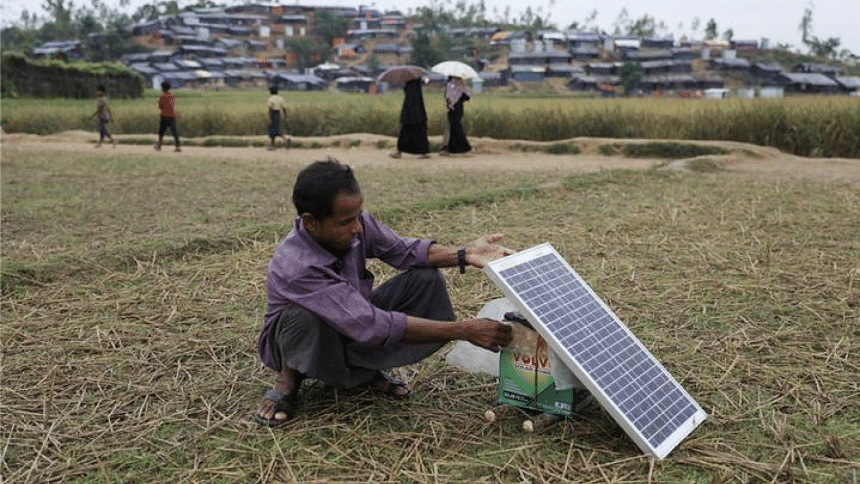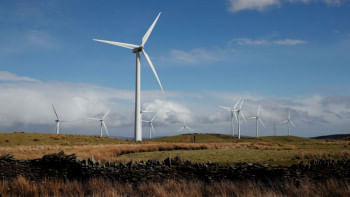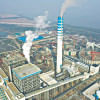Pathway for Bangladesh’s energy transition

The energy and power sector of Bangladesh can be said to have entered its third phase of development. This phase is widely known as the energy transition phase where the country needs to shift its energy base from fossil fuel towards renewable energy-based infrastructure.
In the first phase, Bangladesh had limited energy and power demand matched by supply constraints. In the second phase, spanning the last one and a half decade, power generation has seen robust growth. Since May 2009, the installed capacity has increased from around 5GW to 27.4GW in May 2023 to meet the needs of the growing economy, including the booming garment and textile sector and the growing domestic and commercial sectors. Bangladesh has seen a sustained decline in the energy poverty of its populace in the last two decades.
Yet, given the graduation of depletion of known reserves which has been pushing the country towards imported fossil fuels to supply energy to the power plants and the industrial sector, a major shift to reduce dependency on domestic natural gas is necessary for Bangladesh. In the last two years, the unstable global energy market has sent shockwaves in the nation's energy and power sector.
After making vast progress in recent decades, the energy and power sector is now poised to transition towards a more sustainable and inclusive model of development.
It is precisely in such a context that Bangladesh needs to consider the next phase of its energy and power development saga. It needs to make a bid for energy transition and lift the sector from an existing baseline characterised by a few fundamental shortcomings, including problems of accessibility, equity, and sustainability.
Bangladesh clearly recognises the need for a transition towards a low-carbon energy and power sector that ensures the needs and rights of ordinary people including workers, women, and vulnerable groups. The country has several plans and commitments that underscore this approach. The Mujib Climate Prosperity Plan 2021 has set the target of generating 40 percent of electricity from renewable sources by 2041.
One key problem is the country's increasing entanglement in coal and liquefied natural gas (LNG) infrastructure. Bangladesh has built some new coal-based power plants over the last one decade with a capacity of 3GW and several coal-based power plants are in the pipeline which will add another 6.2GW capacity. A similar rise in capacity will take place through the newly built LNG-based power plants. Consequently, the excess reserve in power generation, which stood at 36 percent in May, 2023, will reach as high as 50 percent by 2025. Such excess reserves mainly through private sector power plants have caused increasing payment of capacity charges, amounting to $12.12 billion in the 2009-2023 period (considering an average rate of Tk.82.5 per dollar for 2009-2023).
A key plank of Bangladesh's recent energy related developments is the focus on imported LNG, a fuel that has seen extreme price volatility. Heavy investments are required for developing infrastructures for LNG, such as floating storage and regasification units. Furthermore, the recent draft of the integrated plan for energy and power seeks to ramp up LNG imports, which poses serious concerns regarding sustainability. Hence, the power sector is burdened with huge public debt, increasing financial losses and rising retail price of electricity at the consumers' end.
The structural requirement for energy transition
Financing will be a key requirement for energy transitions in Bangladesh. In COP 26, it was agreed that energy transition partnerships – i.e. new, innovative financing cooperation mechanisms – will be developed to provide support to developing countries looking to transition towards renewable energy pathways.
This financing should focus on three aspects: reduced financing in fossil fuel-based power generation; financing to support phasing out fossil-fuel-based power plants; and new and innovative financing for renewable energy in generation, transmission, distribution and backward and forward-linkage parts of the supply chain.
National policies and incentives must be aligned to facilitate a just energy transition, including the three aspects mentioned above. The policies, guidelines and strategies pertaining to solar power, for example, often present mixed signals and disparate targets. It is important that investors get a clear and unified signal about the government's policy stance and intent on renewable energy development. The fiscal and financial policies should also clearly incentivise just energy transition. The existing 37 percent duty and taxes levied on the import of renewable energy components like solar inverters is a major bottleneck to renewable energy expansion. The central bank could review the existing green financing portfolio of the banking sector to design a more effective financial ecosystem supporting the energy transition.
The transition will also require capacity building of the key stakeholders including government officials, private sector organisations and civil society organisations. Without proper knowledge and know-how, the transition can be delayed or chequered. The country's solar home systems programme could not achieve its desired impact due to the lack of grassroots capacity and servicing. Out of more than 5 million systems, only around 2 million are now in operation, the rest being out of operation due to various inadequacies.
Equally important will be a compliance and quality assurance infrastructure that ensures that the products and technology used in the energy transition have proper standards. Development of a grid-system which will be compatible with the variant and intermittent supply of energy from the renewable energy-based power plants is also important. Substandard technology can significantly impact the transition towards sustainable energy. In the solar home schemes, low quality batteries reportedly led to customer suffering. Failure to ensure proper quality can erode the confidence and interest of users as well as investors.
As Bangladesh moves towards a middle-income country status, its national development plan also needs to be aligned with its greater profile and larger ambitions. After making vast progress in recent decades, the energy and power sector is now poised to transition towards a more sustainable and inclusive model of development. This model will feature a lower-carbon and more environment-friendly energy mix, and it will also ensure that marginalized social groups have adequate and fair access to energy and socioeconomic opportunities.
Dr Khondaker Golam Moazzem is an economist by profession. He is currently the Research Director at Centre for Policy Dialogue. He can be reached at: [email protected]

 For all latest news, follow The Daily Star's Google News channel.
For all latest news, follow The Daily Star's Google News channel. 











Comments